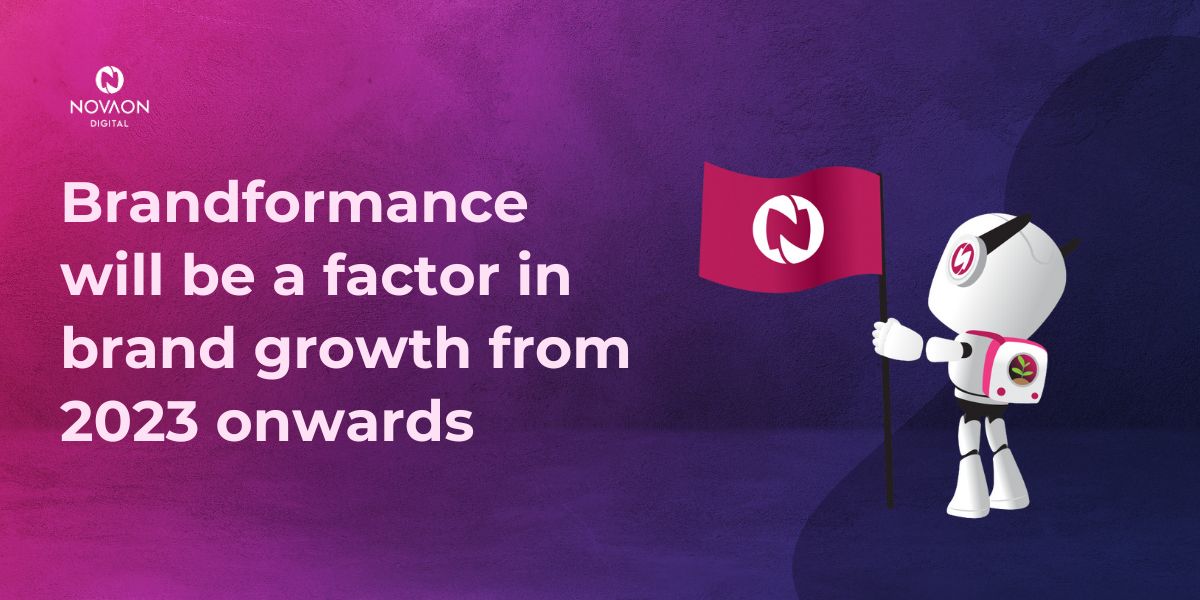
Brandformance is a strategy that promises to attract the attention of many businesses starting in 2023 to address the balance between brand building and performance optimization, bringing long-term benefits to companies.
1. Definition, Origin, and Importance of Brandformance
In the digital environment, users encounter thousands of pieces of content every day. Their attention span is continuously shrinking. It can be said that users are increasingly distracted by the abundance and allure of various digital content formats. Furthermore, numerous digital platforms are constantly evolving and expanding, continuously testing algorithms that pose greater challenges for businesses in attracting their target customers.
The common difficulties facing the economy in 2023 are putting significant pressure on many businesses, leading many leaders to prioritize achieving short-term sales goals. From this strategy, companies focus on optimizing marketing costs and expect to see quick results from their implemented campaigns. Businesses are increasing investments in formats such as sales advertising, prioritizing high return on investment (ROI), and looking for rapid results.
However, companies are also aware that profits from advertising are an approach that only serves short-term needs. Therefore, establishing a marketing strategy that balances short-term and long-term benefits has become more urgent than ever.
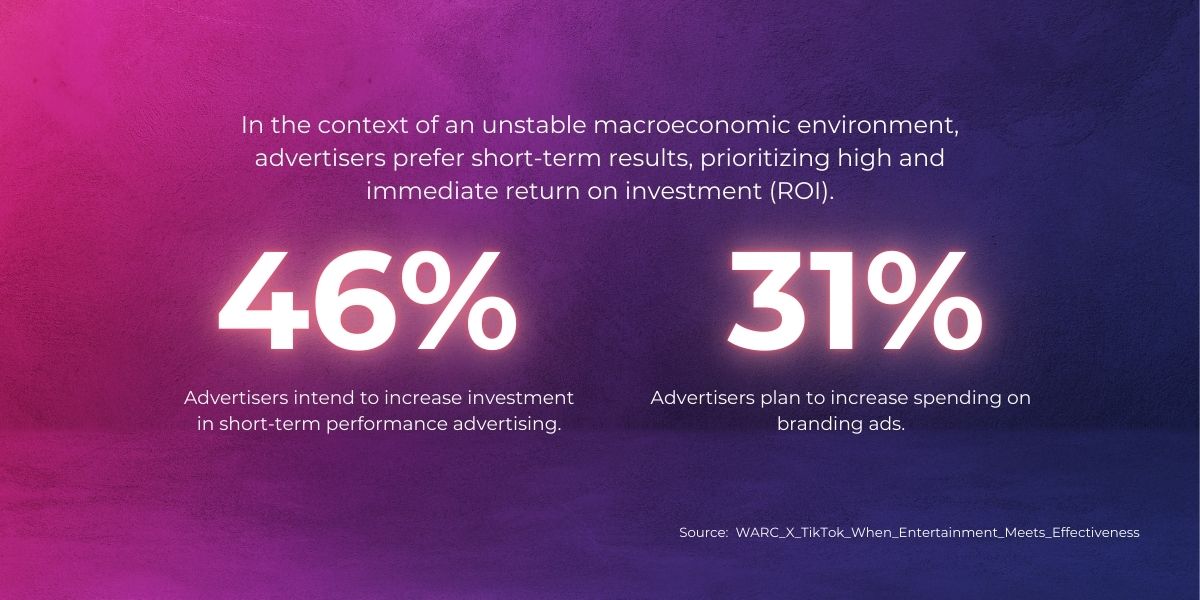
Brandformance emerged as a method to balance and optimize both short-term and long-term benefits for businesses. This approach combines branding and performance in communication strategies. While branding is used to establish an attractive and distinctive appearance for a brand or product in the market to attract and retain customers, performance focuses on stimulating sales and popularity, while keeping customer acquisition costs as low as possible.
2. What does the LEVI effect explain about how to implement Brandformance?
Imagine separating the activities of brand building and performance marketing and placing these two activities on a graph with one axis representing time and the other representing the effectiveness of the company’s marketing activities.
A phase in the implementation process will consist of four steps:
- L – Lift-up: Optimistic about market prospects.
- E – Effectless: Activities begin to trend toward saturation, gradually losing effectiveness.
- V – Vague: The team questions the reasons for failure and explores alternative methods.
- I – Illuminated: New methods are tested and prove effective, leading to strong implementation.
And the cycle continues.
LEVI – Exclusive model from Novaon Digital explains the effectiveness of Brandformance
The graph illustrates the trend line of brand value and performance ROI, corresponding to the individual activities of brand building and performance marketing.
If we place this in the context of a company implementing these activities simultaneously, the characteristics of the two activities are as follows:
- Performance ROI increases rapidly during the Lift-up phase. Brand value also rises but at a slower pace. The effectiveness of performance ROI is much more evident compared to brand value. At the peak of performance ROI, the effectiveness of brand value is visibly lower and tends to plateau (but is not yet saturated) before performance ROI reaches its maximum.
- From the Effectless phase to the Vague phase, performance ROI tends to decrease rapidly, while brand value remains stable (flat), and even shows a slight upward trend toward the end.
- From the Vague phase to the Illuminated phase, performance ROI continues to drop to its lowest point. Upon reaching the starting point of the Illuminated phase, performance ROI begins to increase again. During this phase, brand value continues to rise and shows better effectiveness than performance ROI.
Therefore:
Investing in increasing brand value yields more sustainable results than focusing solely on performance ROI.
Combining these two activities simultaneously through the “Brandformance” method will provide optimal effectiveness for the business.
When implementing Brandformance, metrics traditionally associated with performance can also be effectively used to measure brand health (branding). Below is an example of website metrics in the banking sector.
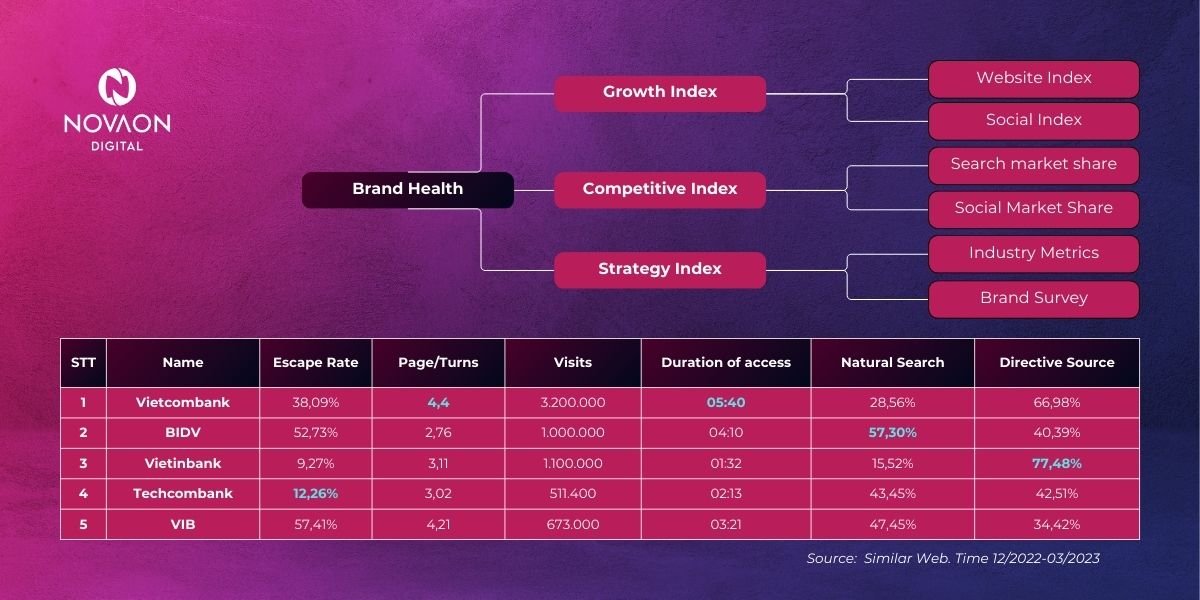
3. Why many large companies will strive to implement brandformance from 2023
Apple’s Actions Since the Release of iOS 14
User privacy protection is becoming a crucial trend at the moment. Apple has taken the lead in implementing new privacy policies through their actions concerning IDFA (Identifier for Advertisers) in iOS. According to various predictions, the percentage of users who agree to share their IDFA with advertisers does not exceed 10%.

Since the release of iOS 14, the restriction on accessing IDFA has been a significant blow to the advertising system. When users decline to share their IDFA, advertisers are unable to track actions such as clicks, downloads, sign-ups, and purchases. This poses a disadvantage, as the inability to monitor user interactions with ads makes it difficult for marketers to measure their effectiveness, leading to wasted budgets on ads targeting disinterested audiences.
Changes in Advertising Algorithms on Major Platforms (Facebook, Google, etc.)
Major platforms like Facebook and Google are continuously updating their algorithms to prioritize content from friends over content from brands. This forces businesses to increase their advertising budgets. A cycle is created where marketers find themselves “drained” in both budget and energy while managing ads on these large platforms.
Compared to 2020-2021, advertising on Facebook is now much more restricted. One noticeable aspect is that in the past, simply having anyone’s phone number or email and entering it in Facebook’s search bar would yield their profile, but that is no longer the case. For example, previously, spending 15 million VND would get you 158,000 impressions. Now, you have to spend at least 20-25 million VND to achieve the same number of impressions. The cost of advertising on Facebook has increased by 5-10% if you want to achieve the same effectiveness as in previous years.

KhGoogle’s algorithm is also reducing visibility, forcing businesses to run more ads and spend more money. Companies are now competing directly for both organic search results and paid search traffic.
Towards Sustainable Marketing
Separating performance advertising from branding is not a sustainable long-term strategy because:
- Over-reliance on Ads: Relying solely on advertising to attract as many customers as possible can negatively impact brand image and customer perception.
- Missed Opportunities: It leads to missed opportunities to attract quality customers through indirect “organic” channels, which are more subtle in their advertising nature.
- Resource Allocation Issues: Companies struggle to allocate resources effectively for two separate strategies, leading to budget waste.
- Incomplete Assessments: This approach can result in inadequate evaluations of brand growth.
Brandformance perfectly addresses the challenge of balancing short-term and long-term goals by establishing a foundation for sustainable business growth while achieving key performance indicators. Brandformance enables companies to simultaneously communicate continuously with their target audience and build a strong brand presence, ultimately improving the overall ROI of their marketing campaigns.
Positive Impacts of the Brandformance Strategy
Brandformance brings numerous positive impacts to businesses, including increased brand awareness, building customer trust, and subsequently improving conversion rates. When a brand effectively connects and shapes its image, customers can easily perceive it as trustworthy, leading to quicker and easier purchasing decisions.
Additionally, by optimizing brand building based on performance metrics, the Brandformance strategy helps save resources and marketing budgets. This results in improved cost-effectiveness and higher profit margins.
4. Typical examples of brandformance implementation
Let’s follow the case study of the hair dye brand from Indonesia, Hello Bubble below:
Hello Bubble has built a Brandformance strategy and achieved impressive metrics: attracting 32,000 participants on TikTok, recording an 18.1% increase in brand recall among the target audience, and a 700% increase in total transaction value within one month. So, what did this brand do?
Hello Bubble launched a store on TikTok Shop to simultaneously enhance brand awareness (branding) while engaging users and increasing revenue (performance). They utilized brand ambassador Blackpink to visually showcase the hair dye colors to users. The brand created stickers and effects on TikTok and encouraged users to use these effects in their own videos. Additionally, various advertising formats, including viral videos with KOL collaborations, TopView ads, and Reach & Frequency (R&F), were employed to amplify the spread of videos using the effects created by Hello Bubble.
Target Audience Messaging
A deep understanding of the target customers is the first factor for an effective Brandformance strategy. Businesses need to grasp customer needs, desires, and how they interact with the brand to deliver appropriate messaging.
Many Brandformance campaigns start with customer surveys, asking specific questions such as:
- What influences your decision to purchase?
- What do you find special about your shopping experience with our brand?
- What aspects of our product do you find most satisfying?
- How does our product help you solve your problem?
Customer feedback is far more valuable than advertisers hypothesizing customer needs and wants.
Data-Driven Decisions and Analytics
Using data and analytics to monitor campaign performance will help businesses understand how customers respond and adjust their strategies in real time. Data not only shortens the decision-making process but also aids in effective budget allocation, especially for Brandformance.
For instance, a Brandformance campaign employing targeted content testing allows marketers to frequently monitor which content is performing well based on data. This enables them to scale successful content that has already proven effective. This content testing approach, developed by Meta, has proven effective in increasing ROI, shortening the time to create effective ads, and reducing costs associated with underperforming advertisements.
Constant Innovation and Adaptation
Optimization and adaptation are essential to keep pace with the continuous changes in the market, technology, and target customer groups. Businesses need to regularly review and adjust their Brandformance strategies to ensure they continue to achieve desired results. Let’s look at a case study where a brand focuses on innovation and adaptation in its Brandformance strategy:
At the end of the year, the retail sector receives a lot of customer attention. As a distributor of sleep products, Vua Nem aimed to attract more customers to purchase premium mattresses during this peak season. Additionally, Vua Nem sought to enhance its branding effectiveness to gain a competitive edge in a strong market and create a gap with its competitors.
Guiding Principle of Performance Culture in Decision-Making
To make quick and highly accurate decisions, a business needs to build, maintain, and develop a performance culture over time. This culture has helped the marketing team continuously generate creative ideas in a short period while ensuring that the decisions made are data-driven and precise.
At this point, imagine a system of barriers on a highway. The highway allows you to drive at high speeds to reach your destination quickly. The barriers provide a clear framework within which you can navigate. If needed, you can change lanes at any time. What remains constant is the direction and high speed at which you are moving.
Similarly, a performance culture acts as a system of barriers for decisions regarding campaign expansion. It provides a clear framework within which decisions can be made without requiring significant adjustments. The benefit of this “barrier” is time savings. For example, when a brand considers “jumping on a trend” on TikTok, it’s crucial to recognize that trends often end much faster than the time many companies spend evaluating whether they want to participate. Performance, in other words, is about pursuing goals, prioritizing speed and effectiveness.
5. How businesses can improve their Brandformance capabilities
Investing Heavily in an In-House Team
To successfully implement Brandformance, businesses need a well-rounded in-house team comprising experts in various areas: market analysis, data analysis, content creation, performance marketing, design, and more. However, it is crucial that team members are strong in their ability to collaborate, understand, and be familiar with the roles of other members, as Brandformance campaigns often require a high level of integration between creativity and technology.
Building a strong in-house team demands time, effort, and significant investment, but it allows businesses to better control the Brandformance process and make necessary adjustments to ensure they meet their business objectives.
Preparing a Budget for Brandformance
Brandformance campaigns typically require a budget for integrated communication activities, such as advertising, social media channel development, hiring influencers (KOLs), and organizing events. To achieve both brand and performance goals, businesses need to allocate their budget reasonably across each category and according to a specific timeline. This approach will help businesses control resources when executing campaigns.
Brandformance is not a short-term strategy; it needs to be maintained and continuously improved over time. Preparing a budget in advance ensures that the business can sustain long-term Brandformance activities.
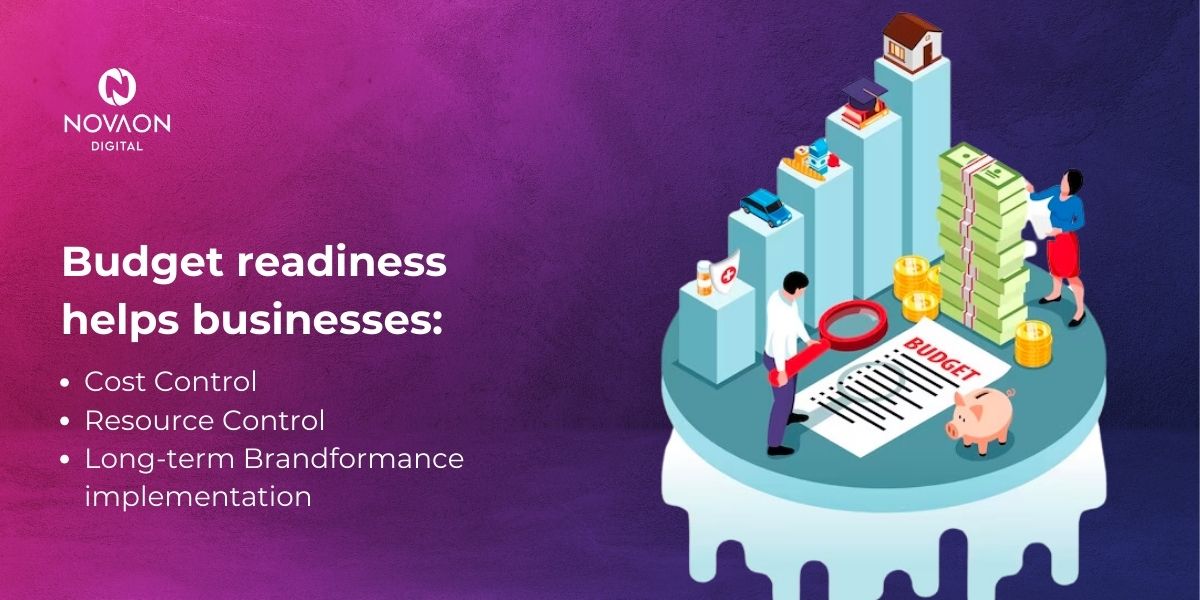
Finding an Agency Partner with Strong Brandformance Capabilities
When first implementing a Brandformance strategy, businesses are likely to encounter mistakes and failures due to various reasons, including a lack of experience and resources. At this stage, seeking a reputable agency partner can help avoid unnecessary risks and losses for the following main reasons:
- Agencies Have Specialized Resources to Support Businesses Holistically: Agencies typically have access to a wide range of expertise and resources that can enhance a company’s Brandformance efforts.
- Reducing Time and Optimizing Goal Achievement Rates: Agencies have established processes for analysis and research, allowing them to expedite the campaign setup and execution.
- Agencies Can Evaluate Advertising Channels Transparently and Objectively: They can provide insights based on the performance of each channel, ensuring that businesses make informed decisions.
- Agencies Can Respond to Platform Changes Effectively: With techniques and experiences that have been continuously tested, agencies are better equipped to adapt to shifts in advertising platforms.
One secret to finding the ideal agency for implementing Brandformance is ensuring that they cover all three elements: Strategy, Creative, and Technology, in their service offerings. They know exactly how to combine these elements effectively and can explain the respective processes in detail to the business.
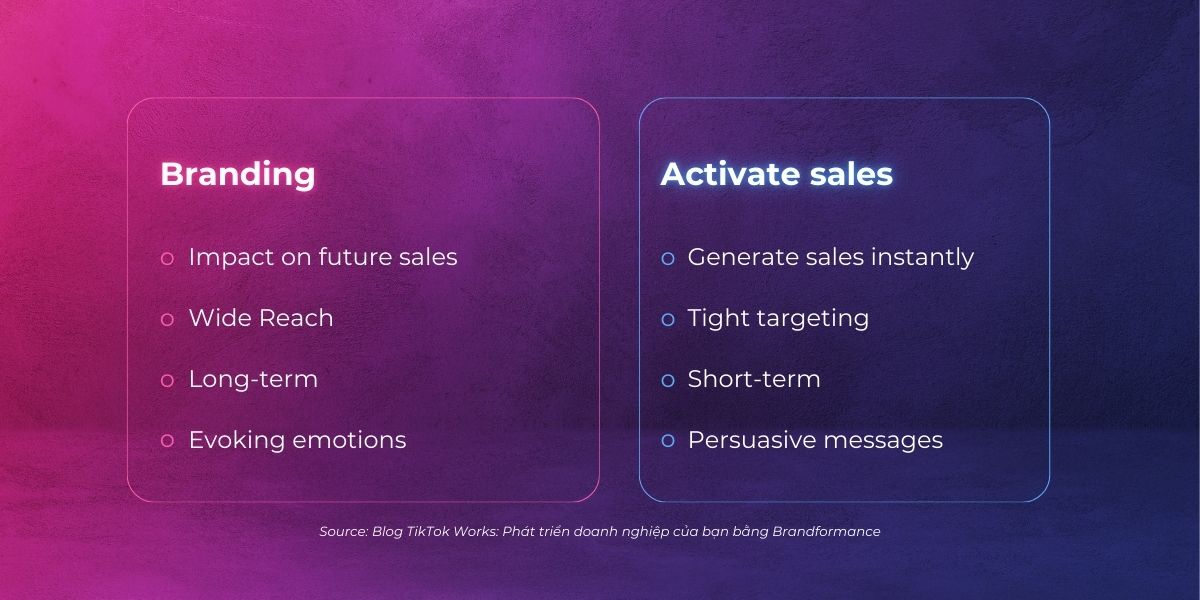
6. Wrapping Up: The Future of Brandformance and Branding
Brandformance will really become the marketing trend of the digital age. Therefore, businesses that want to build a brand image while achieving good results in terms of revenue need to start doing Brandformance right now.



